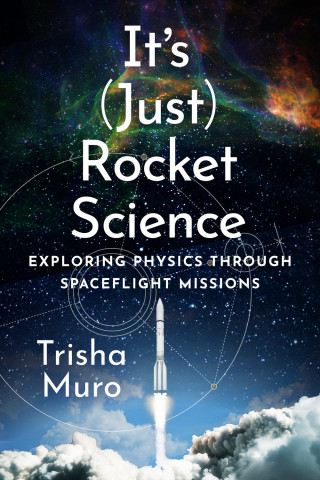
Reviews
It's (Just) Rocket Science provides an accessible introduction of key features of space travel that will interest both aspiring and amateur scientists. Trisha Muro's training in both rocketry and teaching high school are apparent in her debut book. In it, she regales us with the principles underlying the physics of space travel, mostly through an enjoyable narrative, and seasoning the tale only occasionally with the tiniest hint of basic algebra.
It's (Just) Rocket Science utilizes excellent storytelling weaved with examples of rocketry to which the reader can easily visualize and relate. This is a great book for anyone interested in knowing a little more about space science while having little-to-no technical background.
Book Details
Table of Contents
Acknowledgements
Introduction
I. What's Got You Down? (Let's Talk About Gravity)
1. How to Find an Exoplanet: TESS and the Geometry of Orbits
2. A Seemingly Magical Orbit: JWST and
Table of Contents
Acknowledgements
Introduction
I. What's Got You Down? (Let's Talk About Gravity)
1. How to Find an Exoplanet: TESS and the Geometry of Orbits
2. A Seemingly Magical Orbit: JWST and Gravitation
3. From a Relativistic Point of View: Hubble and Relativity
4. Initial Conditions: Voyager and Our Place in Space
II. Let's GO
5. We Are 'Go' For Launch! Sounding Rockets and the Physics of Launch
6. To Mars We Go: Perseverance and the Physics of Orbit
7. A Balance of Forces: Dragonfly and Newton's Laws
Interlude — The Speed You Need, Part 1: Orbits
III. There's No Free Lunch, But There Might be Some Tasty Snacks
8. To Shift a Space Rock: DART and the momentum of collisions
9. Gravitational Slingshots: Psyche and angular momentum
10. Spaceflight's Not-Quite-Free Lunch: Apollo and Conservation of Energy
Interlude — The Speed You Need, Part 2: Escape
IV. Rockets Can't Surf, But They Still Need Waves
11. How to Phone Home From Space: the Deep Space Network and waves
12. Beyond the Rainbow: DAVINCI and the electromagnetic spectrum
13. Seeing the Unseeable: Chandra and optics
V. Look Deeper, and Dream On
14. Sailing on Starlight: Two Solar Sail Spacecraft and Photon physics
15. Spaceflight, Differently: Solar Electric Propulsion Reframes the Rocket Equation
16. Doing the Impossible: Parker Solar Probe and Radiation
VI. Appendices
17. The Metric System
18. The Math of Gravity, Once More
Afterword
Notes on Sources
Bibliography




